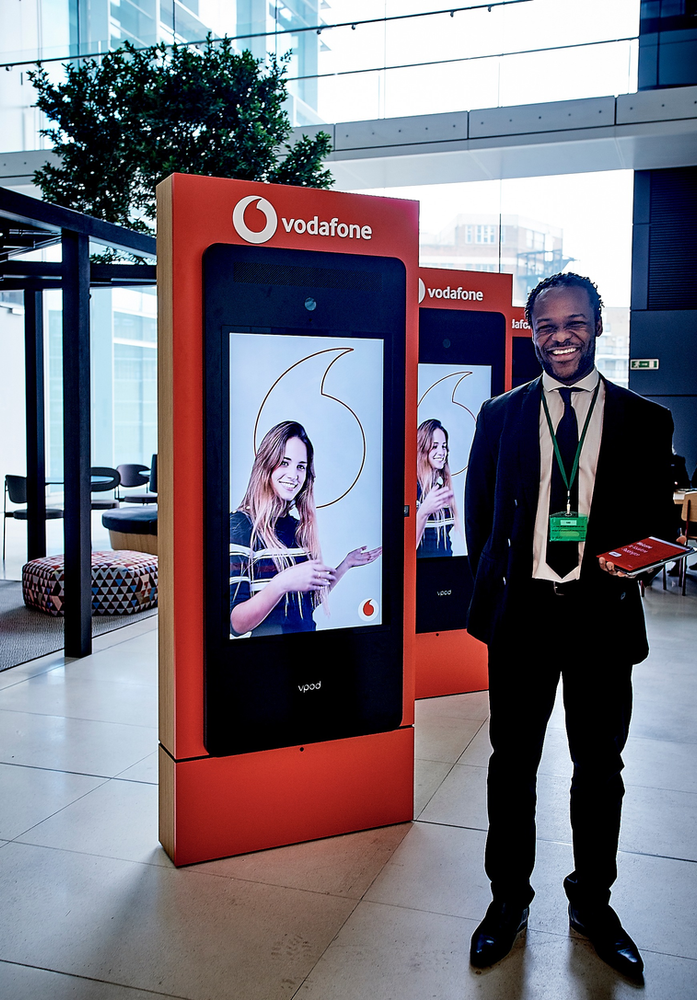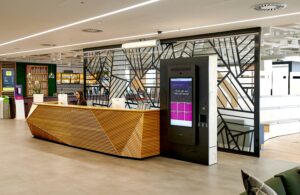Introduction
Are you looking to improve your reception area – deliver the best impression and customer service at your reception; perhaps increase efficiencies or productivity, drive cost or improve visitor experience?
Reception services are integral to the day-to-day running of Front of House, but traditional visitor management does not work for every modern business. In this post, we’ll help you to understand what types of reception services are available and how to implement them in an organisation.
What is a Reception Service (and Why Does it Matter)?

A reception service is a function with the primary goal of greeting and assisting visitors to a corporate office.
In addition to supporting visitors, reception services will typically assist with administrative tasks such as receiving and distributing deliveries, answering telephone calls, scheduling appointments, and other Facilities tasks.
Reception services are important because they are the first thing that someone sees when they enter a building; whether they’re employees, couriers, customers or partners, the first impression in your lobby gives an impression of what the rest of your business is like. Reception services keep the building running smoothly; from accepting calls and scheduling appointments for the CEO, to taking in deliveries and making sure they reach the right person, reception services maintain BAU in your office.
The history of Reception Services
Clerical workers such as bookkeeping and secretaries have existed as far back as the Roman Empire, where during this time these roles were considered to be highly skilled and integral to leadership and Government.
The Remington and Sons typewriter was created in the late 1800s which led to huge advances in office work. The “QWERTY” concept was also created by these manufacturers around this time too.
Since then, secretarial and administrative roles have developed over time; in the early 1900’s, the introduction of the typewriter allowed women to be able to begin to enter the workplace, and by the 1960’s there were 1.8 million female clerical workers.
Nowadays, technology has had a huge impact on reception services; the introduction of PCs in the 1990’s has propelled office and clerical work, and visitor management systems becoming popular.
Types of Reception Service
1. Unmanned self-service reception
Unmanned reception means a self-service reception without reception staff on site. This type of reception usually has something in place of a receptionist; such as a visitor sign in book. Let’s break down the pros and cons of having an unmanned reception:
Pros:
- Save money on headcounts
- Suits smaller, satellite office locations which may have a low visitor footfall
- Can see some immediate cost savings
Cons:
- It does not provide a good visitor experience, potentially showing a lack of care for your customers
- It can be inefficient overall if the process is not fully automated
- Admin tasks have to be redistributed to other areas of the business
- Can be expensive in the long run
- No dedicated person to support if a visitor needs help
Unmanned reception services can suit businesses which are space poor or with low visitor traffic. However, there are significant downsides to unmanned entrances, especially if there is a visitor signing in the book in place of a physical presence, as it poses multiple security and compliance risks to modern businesses.
How to improve it?
We recommend introducing a self-service kiosk on-site to support the visitors when they need to speak to someone. Self-service kiosks have the ability to video call your centralised reception team or outsourced digital receptionists to answer your visitors’ questions.
2. Reception Staff without Technology
This type of reception service requires full-time receptionists on site to greet your visitors, they can be your in-house receptionist or outsourced from a Front of House service provider. In this scenario, reception staff is on hand to support visitors as they enter your building, as well as deal with other administrative tasks.
Pros:
- Face-to-face customer service that adds the personal touch
- Staff on hand to support visitors when needed
- Flexibility to respond to unexpected events (unplanned visits, deliveries, etc)
Cons:
- More likely to have queues during busy periods
- Quiet periods will leave staff with little to do
- Staff retention issues as they need to execute many repetitive tasks
- Low efficiency
- Potentially forgot important processes during busy periods
- Higher risk of illness contamination
Although visitors will undoubtedly receive fantastic service when they arrive at your business, busier periods could affect the quality of your customer service.
In addition, staff retention levels can occur in this type of Font of House setup; costing a business approx £3000+ per year in retraining and new uniforms.
3. A mix of receptionists and technology

Another reception service is a mixture of people and technology – a digital reception service. It means digitising parts of your reception tasks and eliminating the repetitive manual work to check visitors in, so your reception staff can focus on providing a meet-and-greet concierge service. As with the previous two options, let’s take a look at the pros and cons of this option.
Pros:
- High-efficiency levels
- Technology can support staff during busy periods
- Increased productivity
- Allows staff numbers to be maintained throughout the day
- Drives cost savings in the long term
- Upgrade brand image
Cons:
- Can have high upfront costs
- Can be difficult to adopt in an organisation if not implemented effectively
In this instance, technology compliments people to create cohesive, professional, and modernised receptions for organisations. The latter option is the best of both worlds, however, and can, in some cases, be costly.
3 Tips for choosing the exemplary reception service for your business
With many reception service products/providers on the market, it can be difficult to identify which solution is best for your organisation. Thankfully, we have some top tips to help you choose the right product.
1. Understand your driver
It is important to understand what your operational goals are for implementing any solutions. Is it to improve visitor experience, save costs, or perhaps a mixture of the two?
2. Efficiency is the key to cost reduction.
As you embark on your search for the right reception service, it’s crucial to have a clear understanding of your current digital efficiency at your reception. This understanding serves a dual purpose:
- Identifying areas for improvement: By assessing your reception’s digital efficiency, you can pinpoint specific areas where enhancements can be made. Whether it’s digitising the visitor check-in process, automating the parcel management, or optimising workflow, recognising these opportunities for improvement is essential.
- Supporting your business case and budget request: A solid understanding of your reception service’s efficiency can greatly support your efforts when presenting a business case or requesting a budget for implementing changes. By showcasing how improvements in efficiency can drive cost savings and enhance overall operations, you strengthen your position and increase the likelihood of gaining approval.
In other words, it’s essential to critically evaluate the efficiency of your reception service and explore alternative solutions. One such solution gaining traction in the industry is the adoption of smart reception. These cutting-edge systems leverage technology to streamline visitor management, enhance security, and optimise operational efficiency.
3. Consider a durable solution
If you decide to introduce technology to support your reception service, it’s important to use the right hardware. There are some downsides to simply installing a check-in app on your iPad or phone. Many products on the market work well with iPads, but iPads can be difficult to maintain for commercial use. Because they’re turned on for the majority of the day, iPads can burn out and become costly in the long run.
When looking for visitor management hardware, we recommend looking for products that are specially designed for this purpose.
Read more about what I should be aware of using an iPad for reception service
Virtual Reception Service: Human & Tech
Vgreet by Vpod is a virtual reception software that streamlines your visitor management process and supports your reception staff, offering an end-to-end user journey that brings your reception service to the next level.
Vpod provides the complete solution and can integrate with 3rd party systems to adapt to a customer’s existing commitments and processes, providing a truly tailored approach. The features include:
More resources
Get in Touch
Are you interested in hearing more about how we can support you? Contact Us



